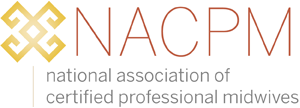NACPM’s federal advocacy has resulted in historic funding to grow the midwife of color workforce. In 2019, NACPM worked with Congress to include midwifery training programs in the Scholarships for Disadvantaged Students (SDS) program, ensuring for the first time that MEAC-accredited schools would be eligible for federal funding through this program.
This year alone, Bastyr University’s midwifery program will award $900,000 in scholarships through a grant from the SDS program!
The SDS program is administered by the federal agency, Health Resources and Services Administration (HRSA), and is authorized under Title VII of the Public Health Service Act on a five-year grant cycle. Additional funding has been appropriated for the program and for midwifery schools in subsequent years, including an additional $1,500,000 for midwifery training in 2022. The primary goal of this funding is to increase the number of midwifery graduates working in underserved communities and those from disadvantaged backgrounds, including students of color.
Bastyr University SDS Awardees
In 2020, NACPM worked with MEAC and the schools to hire a specialty firm, McAllister and Quinn, to support our schools to submit strong, competitive applications for SDS grants. Among the approximately fifty midwifery schools training CPMs, CNMs, and CMs in the U.S., seven schools applied in 2020. NACPM is proud that three of these seven schools were MEAC schools! HRSA issued 4 awards that year, including to the MEAC-accredited midwifery program at Bastyr University in Washington State, a 3-year Master’s degree program that has been educating midwives for nearly 45 years. Bastyr received a 5-year grant of $3.25 million dollars to provide scholarships for students from economically or educationally disadvantaged backgrounds. This year, the school received an additional $250,000 for a scholarship total of $900,000 for the upcoming academic year.
Before receiving the SDS grant, the University had worked hard for a decade to better support students from underrepresented groups, but students were left to finance their education through student loans. For those who are already struggling economically, this can mean being saddled with student loan debt for decades to come.
Since receiving the HRSA grant for Scholarships for Disadvantaged Students in 2020, the demographics of Bastyr’s student body have shifted dramatically. Before federal funding, only about 20% of the student body came from underrepresented racial and ethnic groups. Since receiving HRSA funding for scholarships in 2020, the proportion of student midwives from underrepresented groups has more than doubled. Bastyr’s student body is now 50% Black, Latina and Pacific Islander. More students are first-generation college students or come from underperforming high schools; over 40% of Bastyr’s students are now coming from educationally disadvantaged backgrounds.
Student support through the SDS program is a critical first step in developing the racially representative midwifery workforce needed to meet the urgent needs of the childbearing population. The next imperative is to establish permanent new streams of funding for midwifery training by passing the Midwives for MOMS Act. This legislation prioritizes funding to increase the midwife of color workforce. In addition to direct student support, the MOMS Act will also expand training programs and support the growth of the preceptor workforce, critical needs that must be addressed in the effort to grow an effective midwifery workforce. It is time to fund midwifery education in the same way that other healthcare professions have been federally supported for many decades.
NACPM is proud to share this example with you of how our policy work supports Certified Professional Midwifery and addresses the imperative of a racially representative midwifery workforce.

